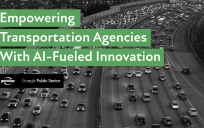Wireless applications in four areas — agriculture, transportation, energy, and government — can reduce emissions, according to a report commissioned by the wireless trade association CTIA and prepared by BSR. For example, transit signal priority systems that use wireless technology to keep buses moving can reduce fuel consumption by 19% and remove 1.2 million metric tons of carbon dioxide emissions per year. ”Wireless technology can help improve the delivery of a wide variety of public services in a more sustainable and useful manner,” CTIA president and CEO Steve Largent told Government Technology. “As local, state and federal governments continue to explore new ways to more efficiently serve their constituents, wireless products and services offer them a unique opportunity to do that while being more environmentally and fiscally responsible.” Download the full report (PDF).
Recent Articles on GovLoop
- From Risk to Resilience: Making the Case for Mission-Critical OT Security
- What’s Next for CX?
- Turn AI Investments Into Meaningful Outcomes
- Warm Up to December Online Training
- A Quantum Computing Refresher
- Want to Increase Public Engagement? Be Intensely Collaborative
- Preparing for Post-Quantum Cryptography
- What Did Agencies Learn About AI in 2025?
- Empowering Transportation Agencies With AI-Fueled Innovation
- AI: Where Are We Now?




Leave a Reply
You must be logged in to post a comment.